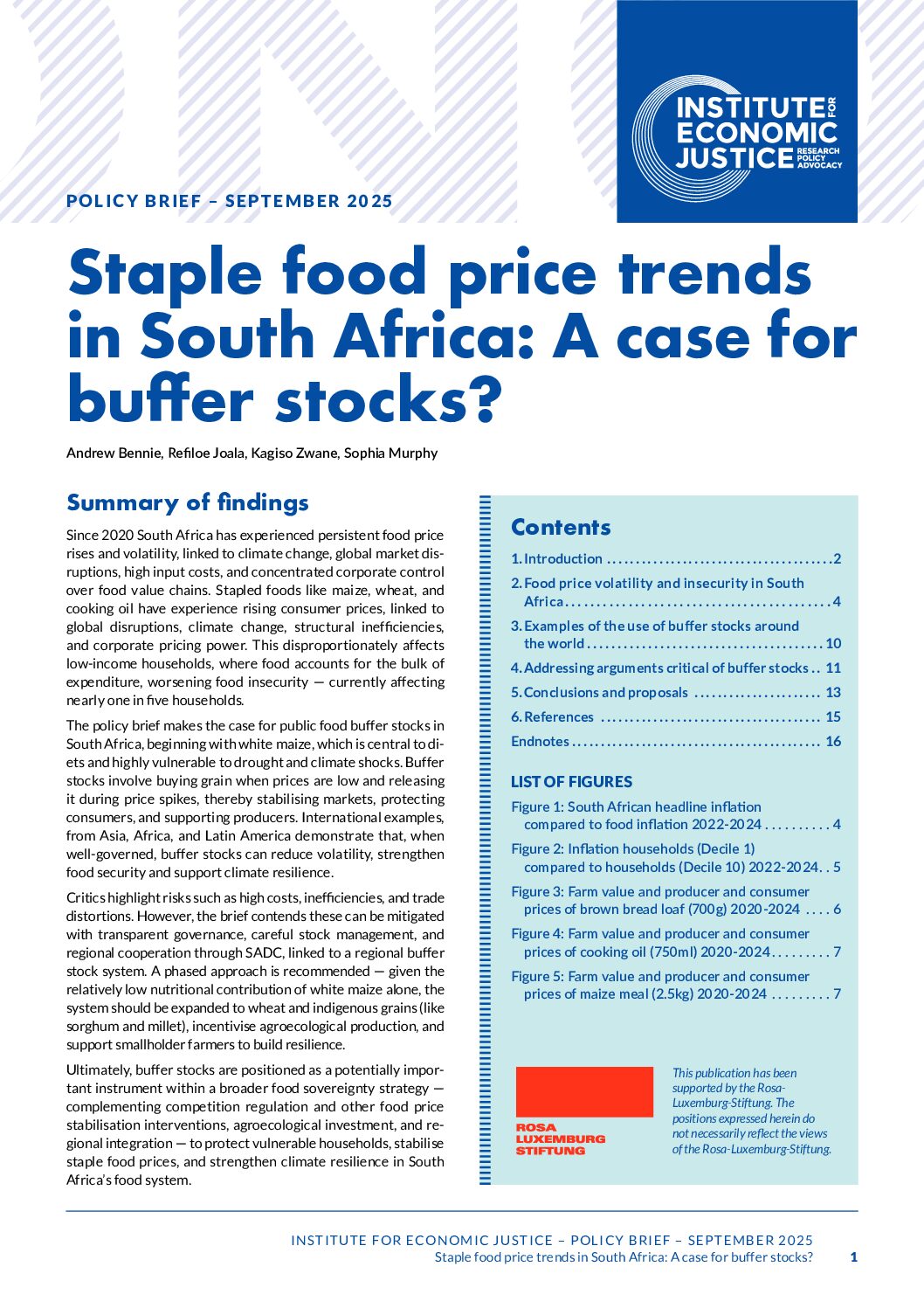Rising Food Prices
Since 2020, the cost of staple foods like maize, wheat and cooking oil has kept climbing. Climate change, global market disruptions, high input costs and corporate control of food value chains have driven these increases. For low-income households, who spend most of their income on food, this has worsened food insecurity, which now affects nearly one in five households.
Why Buffer Stocks Matter
White maize, a key staple for most South Africans, is highly vulnerable to drought and climate shocks. Even when farm prices fall, consumers often do not see lower prices in shops. Public buffer stocks offer a way to stabilise markets by buying grain when prices are low and releasing it during price spikes. This protects consumers, supports farmers and reduces market volatility.
What the Brief Recommends
The brief proposes starting with white maize and later expanding to wheat and indigenous crops like sorghum and millet. It calls for clear governance, participation by farmers and civil society, and investment in storage and transport. It recommends procuring from smallholder farmers using ecological methods to build climate resilience and strengthen rural livelihoods.
Building a Fairer Food System
South Africa cannot leave its food security vulnerable to climate shocks and volatile markets. A well-designed buffer stock system can anchor food prices, reduce hunger and inequality, and support small-scale farmers. This is an opportunity to create a more resilient and inclusive food system.

